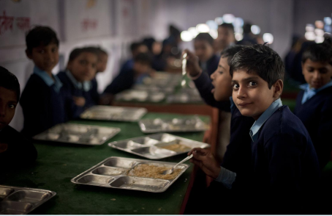Protecting children from harmful impacts of food marketing

Unhealthy diets are a leading global public health risk, contributing to all forms of malnutrition (i.e. stunting, wasting, micronutrient deficiencies, overweight & obesity and diet-related non-communicable diseases). In India, according to NFHS-5 (2019-21), 3.4 percent of children below the age of 5 years are overweight, an increase from 2.1 percent in 2015-16 (NFHS-4). Food environments, which include food marketing, are recognised as one of the key influences on diets. Children and adolescents continue to be exposed to powerful food marketing in settings where they gather (e.g., schools, sports clubs), or through their favourite media, including television channels and digital spaces. Such marketing predominantly promotes less healthy food options, such as sugar-sweetened beverages, chocolate and confectionery with high fat, sugar and/or salt (HFSS) contents. Marketers use a wide variety of strategies that are likely to appeal to children, including celebrity/ sports endorsements, promotional characters, product claims, gifts/ incentives, tie-ins, competitions and games. Such marketing negatively shapes children’s food preferences, their food choice and dietary intake. More recent evidence has reinforced these findings, and the advent and growth of digital marketing have raised new concerns. Marketing of HFSS food is now increasingly being looked upon as a child right concern. To address this challenge, and to support countries in protecting children, the World Health Organization (WHO) has developed an evidence-informed guidelines on policies to protect children from the harmful impact of food marketing.


